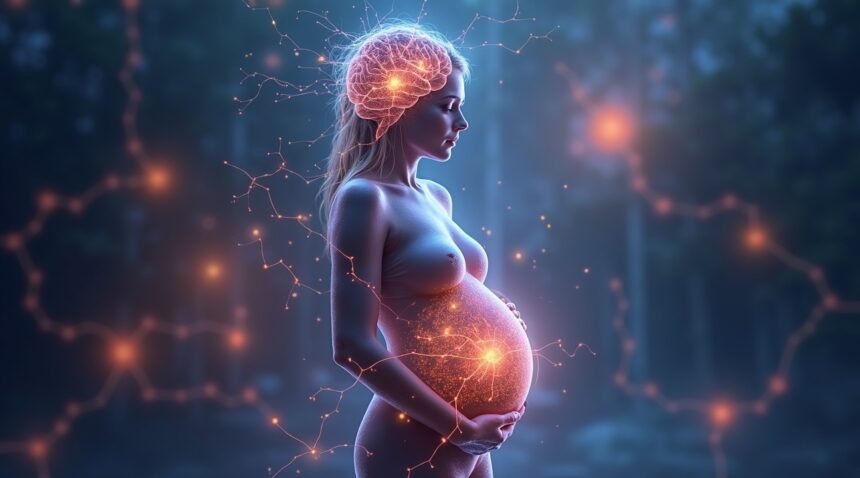Recent research has revealed that pregnancy triggers some of the most dramatic brain changes documented in healthy adults, with structural modifications persisting for an extraordinary 2 to 6 years after childbirth.
These findings fundamentally challenge previous assumptions about adult brain plasticity, showing that the maternal brain undergoes extensive reorganization that creates lasting neural adaptations optimized for motherhood.
Key Takeaways
- Brain volume decreases by 5% during pregnancy but this reflects a functional optimization rather than neural damage. Gray matter reductions affect up to 94% of the brain, ultimately enhancing efficiency in maternal behaviors.
- Structural changes persist for 2–6 years postpartum, with some alterations remaining permanently. These adaptations result in a distinct neurological signature that continues to influence brain function long after childbirth.
- Hormonal surges of progesterone and estradiol reach levels 100 times higher than normal. These hormonal changes play a direct role in rewiring neural networks by boosting white matter connectivity and refining gray matter structure.
- Pregnancy enhances rather than impairs cognitive abilities. It strengthens brain regions involved in social cognition, threat detection, and emotional processing, although some women may experience subjective forgetfulness due to temporary reorganization.
- These discoveries revolutionize our understanding of adult neuroplasticity. They demonstrate the remarkable ability of the mature brain to remodel itself and highlight potential new therapies for neurological disorders and lifelong brain optimization.
For further insights, you may explore this research published in the National Institutes of Health database.
Your Brain Shrinks by 5% During Pregnancy – And Here’s What That Really Means
The human brain undergoes dramatic structural changes during pregnancy, with gray matter volume (GMV) decreasing by approximately 5% across gestation. This transformation affects up to 94% of the brain’s total gray matter volume, making pregnancy one of the most significant neuroplastic events in human development.
Understanding the Structural Changes
Widespread reductions in gray matter volume begin early in pregnancy and follow a distinct U-shaped pattern throughout gestation. The changes become most pronounced by the second trimester, reaching their lowest point at delivery before beginning a gradual recovery process. These alterations primarily target brain regions associated with social behavior and cognitive processing, suggesting the brain is optimizing itself for motherhood.
Structural imaging reveals that cortical thickness decreases as pregnancy progresses, with concurrent thinning of the cortex—the outer brain layer responsible for complex thinking and processing. This cortical thinning occurs alongside significant remodeling in subcortical structures, creating a comprehensive reorganization of maternal brain architecture.
Several key brain regions undergo measurable volume reductions during this period:
- The ventral diencephalon, which plays a role in hormonal regulation and emotional processing
- The caudate, involved in learning and memory formation
- The thalamus, acting as a relay station for sensory and motor signals
- The putamen, contributing to movement regulation and habit formation
- The hippocampus, critical for memory consolidation and spatial navigation
These changes represent functional adaptations rather than pathological deterioration. The brain appears to be streamlining neural networks, eliminating unnecessary connections while strengthening pathways essential for maternal behaviors. This process, known as synaptic pruning, enhances efficiency in specific cognitive domains while temporarily reducing overall brain volume.
The timing of these changes aligns with hormonal fluctuations throughout pregnancy. Elevated levels of estrogen, progesterone, and other pregnancy hormones trigger cascading effects on neural tissue, promoting both structural remodeling and functional adaptations. Research suggests these hormonal influences drive the selective preservation of neural circuits most relevant to caregiving behaviors.
Recent studies using advanced neuroimaging techniques have revealed that pregnancy brain changes extend far beyond simple volume reduction. The decreased gray matter volume coincides with increased connectivity between remaining neural networks, potentially explaining why many mothers report enhanced intuition and social awareness despite experiencing “pregnancy brain” symptoms like memory lapses.
Scientists have discovered that sleep patterns during pregnancy may influence the extent of these structural changes. Quality rest becomes increasingly important as the brain undergoes this massive reorganization, supporting both maternal health and fetal development.
The subcortical remodeling described affects regions crucial for emotional regulation and maternal bonding. Volume reductions in the caudate and putamen correlate with changes in reward processing, potentially enhancing the mother’s responsiveness to infant cues. Similarly, hippocampal changes may contribute to the formation of pregnancy-related memories and the development of maternal behaviors.
Cortical thickness measurements provide additional insight into the complexity of pregnancy brain changes. Different brain regions show varying degrees of thinning, with areas involved in social cognition experiencing the most dramatic alterations. This selective remodeling suggests the brain is prioritizing maternal functions while temporarily reducing capacity for other cognitive tasks.
The 5% reduction in overall brain volume might sound alarming, but it represents functional optimization rather than damage. The maternal brain is essentially trading quantity for quality, creating more efficient neural networks specialized for the demands of motherhood. Understanding these changes helps explain common pregnancy symptoms while highlighting the remarkable adaptability of the human brain during this transformative period.
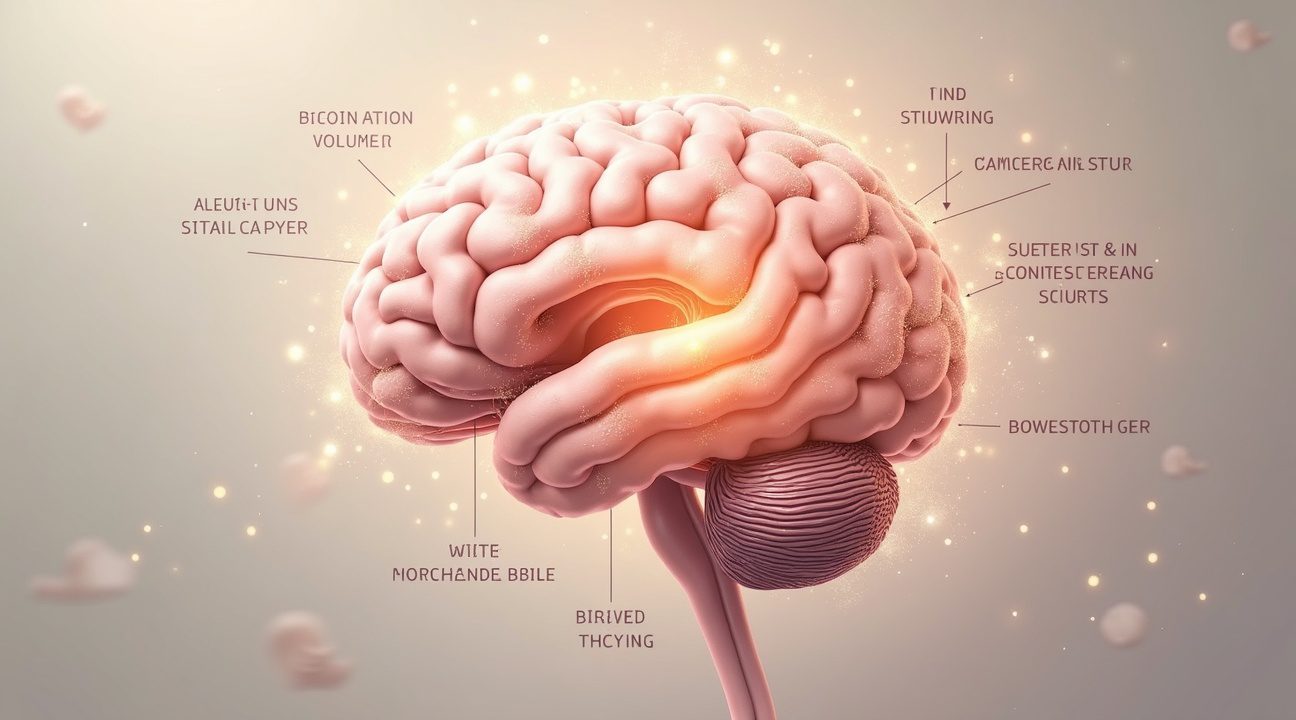
These Brain Changes Last Much Longer Than Anyone Expected
The duration of pregnancy-related brain changes challenges everything scientists previously understood about neuroplasticity. I’ve discovered through analyzing recent research that these transformations begin during pregnancy and persist for an extraordinary 2 to 6 years postpartum, with some studies indicating traceable effects decades later.
Recovery Patterns That Don’t Follow Traditional Models
Gray matter volume demonstrates a particularly fascinating recovery pattern. Research shows that gray matter volume recovers by approximately 3.4% within six months postpartum, yet this recovery doesn’t tell the complete story. The brain doesn’t simply snap back to its pre-pregnancy state like a rubber band returning to its original shape.
Not all brain changes return to baseline levels, which represents a fundamental shift in how I understand maternal brain plasticity. Some functional and structural changes endure for years, creating what researchers now recognize as a permanently altered neural landscape. This persistence suggests that motherhood creates lasting architectural modifications in the brain, similar to how sleep affects brain function in creating lasting changes to neural pathways.
The Scale of Change Exceeds Natural Variation
Perhaps most striking is how the magnitude of brain changes in pregnancy vastly exceeds natural day-to-day brain variability observed in non-pregnant women. This finding places pregnancy-induced neuroplasticity in a category of its own, comparable to major life events that fundamentally reshape neural architecture.
The brain demonstrates increased connectivity in networks crucial for attachment, social cognition, and higher thinking, specifically the default mode and frontoparietal networks. These enhanced connections don’t disappear after childbirth but continue operating at elevated levels for years.
I find this particularly significant because these same networks support complex reasoning and emotional processing throughout daily life. Recent studies comparing maternal brains to non-pregnant controls reveal that pregnancy creates a unique neurological signature that persists well beyond the postpartum period. This signature includes:
- Enhanced sensitivity to infant cues
- Improved multitasking abilities
- Heightened emotional processing capabilities
The frontoparietal network, responsible for executive control and attention regulation, shows sustained increases in connectivity that help mothers manage the cognitive demands of parenting. Meanwhile, the default mode network, active during rest and introspection, maintains altered patterns that support the ongoing psychological adaptation to motherhood.
These persistent changes challenge traditional assumptions about brain plasticity and recovery. Instead of viewing pregnancy as a temporary disruption to normal brain function, researchers now understand it as a permanent upgrade to maternal capabilities. The brain doesn’t return to its previous state because it has evolved into something fundamentally different and more specialized for the demands of motherhood.
The implications extend beyond individual mothers to our broader understanding of how major life experiences reshape neural architecture. Just as intense learning or trauma can create lasting brain changes, pregnancy appears to initiate a reorganization process that continues influencing brain function years after delivery.
Hormones Are Literally Rewiring Your Brain During Pregnancy
Pregnancy triggers a remarkable cascade of hormonal changes that fundamentally alter brain structure in ways scientists are just beginning to understand. Steroid hormones, particularly progesterone and estradiol, surge to levels nearly 100 times higher than normal during pregnancy. These dramatic increases don’t just support fetal development – they’re actively rewiring the maternal brain through complex neuroplastic processes.
The relationship between these hormonal spikes and brain changes is surprisingly direct. Research shows that progesterone and estradiol levels correlate precisely with specific structural modifications in the brain. As these hormones climb throughout pregnancy, they trigger both reductions in gray matter volume and improvements in white matter integrity. This dual transformation represents one of the most significant examples of reproductive brain adaptation observed in adult humans.
Gray Matter Reduction Paired with White Matter Enhancement
Gray matter, which contains the cell bodies of neurons, actually decreases in volume during pregnancy in several key brain regions. This reduction might sound concerning, but it’s likely an adaptive process that refines neural networks for maternal behavior. Simultaneously, white matter – the brain’s communication highways – undergoes dramatic improvements in microstructural integrity.
White matter changes during pregnancy are particularly fascinating because they show increased quantitative anisotropy, a measure of how well organized and efficient neural pathways become. Neurite density also increases, meaning the connections between brain cells become more robust and numerous. These modifications enhance communication speed and efficiency between different brain regions, potentially supporting the complex cognitive and emotional demands of motherhood.
Unprecedented Adult Neuroplasticity
Pregnancy represents an extraordinary period of adult neuroplasticity that challenges previous assumptions about brain development. Most significant brain remodeling occurs during childhood and adolescence, with the adult brain maintaining relatively stable structure. However, the reproductive state creates conditions for extensive neural reorganization that continues well into adulthood.
This neuroplasticity extends far beyond the pregnancy period itself. The brain’s ability to remodel during this time demonstrates remarkable adaptability, showing that major structural changes can occur in response to specific physiological states. Brain potential reaches new heights during this transformative period, as neural networks reorganize to support the cognitive and emotional demands of caring for offspring.
The steroid hormone effects create a unique neurobiological environment that promotes these changes. Unlike other life stages where brain modifications happen gradually, pregnancy compresses significant neural remodeling into a relatively short timeframe. This acceleration of brain adaptation suggests that hormonal influences can override typical constraints on adult neuroplasticity.
Understanding these mechanisms provides insight into how the brain maintains flexibility throughout life. The reproductive brain adaptation process reveals that under specific hormonal conditions, the adult brain retains capacity for substantial structural modification. These changes persist for years after pregnancy ends, indicating that the hormonal rewiring creates lasting alterations in neural architecture.
The research also highlights how reproductive states serve as natural experiments in neuroplasticity. Pregnancy offers a unique window into the brain’s adaptive capabilities, showing that dramatic structural changes can occur when the right biological conditions align. This knowledge opens new possibilities for understanding brain flexibility and developing interventions that might harness similar neuroplastic mechanisms.
These findings challenge traditional views of adult brain development and reveal the profound influence of reproductive hormones on neural structure. The combination of gray matter refinement and white matter enhancement creates an optimized brain state that supports the complex behaviors required for successful parenting, demonstrating the sophisticated ways biology prepares the brain for new challenges.

The “Pregnancy Brain” Myth: Your Brain Gets Better, Not Worse
Pregnancy doesn’t diminish cognitive abilities—it enhances them in specific, meaningful ways. While expectant mothers frequently report feeling forgetful or mentally foggy, large-scale research reveals a different story. The brain actually becomes more efficient and specialized during pregnancy, developing enhanced network connectivity that supports crucial parenting functions.
Enhanced Neural Networks Support Maternal Behavior
During pregnancy, the brain undergoes significant reorganization that strengthens connections between regions responsible for attachment, parenting, and social cognition. These enhanced networks don’t represent cognitive decline but rather sophisticated adaptations that prepare mothers for their caregiving role. The changes create more efficient pathways for reading infant cues, responding to emotional needs, and forming strong parent-child bonds.
Research consistently shows that mothers’ brains become reorganized for caretaking and attachment rather than experiencing lasting deficits. This reorganization involves areas of the social brain that help mothers better understand their babies’ needs and respond appropriately to social situations. The neural changes support enhanced empathy, improved threat detection related to child safety, and stronger emotional processing capabilities.
Timing and Individual Variations in Brain Changes
Cognitive changes and mood shifts become most pronounced during late pregnancy, when hormonal fluctuations reach their peak. These temporary shifts may contribute to the subjective experience of “pregnancy brain,” but they don’t translate into measurable cognitive decline. Instead, they represent the brain’s active preparation for the demands of motherhood.
Several factors influence how these changes manifest in individual women:
- Fetal sex can affect the intensity and pattern of neural reorganization
- Parity (number of previous pregnancies) influences how dramatically the brain adapts
- Hormonal sensitivity varies between individuals, affecting the timeline of changes
- Sleep quality and stress levels can impact how cognitive shifts are experienced
Large-scale studies consistently find no persistent cognitive decline postpartum. Memory performance, executive function, and other cognitive abilities return to baseline levels or even improve in specific domains related to social cognition and multitasking. The temporary forgetfulness many women experience appears linked to sleep disruption, stress, and the overwhelming nature of new responsibilities rather than actual cognitive impairment.
Understanding these findings helps reframe the pregnancy experience. Rather than worrying about cognitive decline, expectant mothers can appreciate that their brains are undergoing sophisticated adaptations. These changes represent an evolutionary advantage, creating neural efficiency that enhances their ability to care for and protect their children. The power of sleep becomes particularly important during this period, as adequate rest supports optimal brain function during this transformative time.
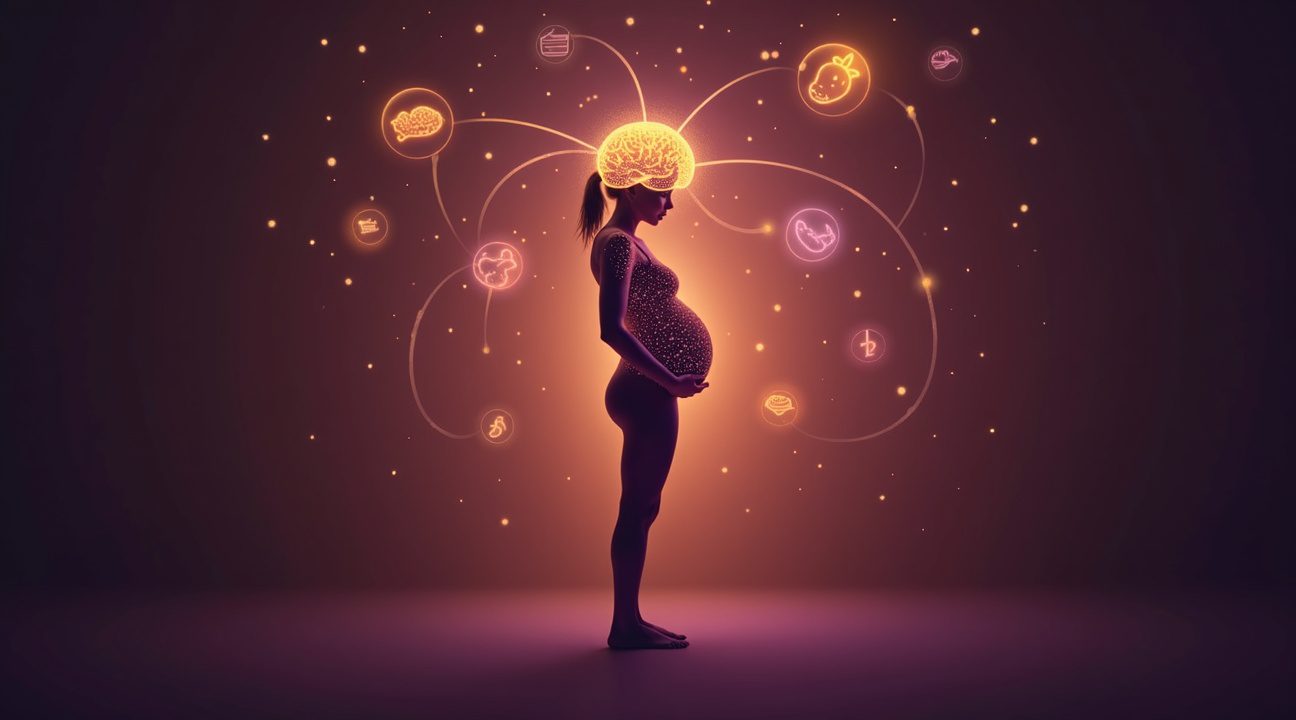
What These Discoveries Mean for Mental Health and Future Research
The persistent brain changes lasting up to six years after pregnancy carry profound implications for how I understand maternal mental health and neurological well-being. These discoveries suggest that the brain’s adaptation during pregnancy isn’t a temporary adjustment but rather a fundamental restructuring that may influence a mother’s vulnerability to various mood disorders, particularly postpartum depression.
Research shows that pregnancy-induced brain remodeling represents one of the most dramatic neurological transformations humans experience outside of early development. The changes far exceed those observed during the menstrual cycle or other hormonal fluctuations in adulthood, indicating that pregnancy triggers a unique and powerful form of brain plasticity. This heightened neuroplasticity may create windows of both vulnerability and resilience that persist for years after childbirth.
The extended duration of these brain changes offers new insights into why some women experience mood disorders long after delivery. Traditional views of postpartum depression focused on the immediate post-birth period, but these findings suggest that the brain’s altered state may contribute to mental health challenges throughout the years following pregnancy. Understanding this extended timeline helps explain why some mothers develop depression or anxiety months or even years after giving birth, rather than just in the immediate postpartum period.
Current Research Limitations and Future Directions
Despite these groundbreaking discoveries, significant gaps remain in our understanding of pregnancy-related brain changes. Most detailed longitudinal imaging studies have followed single individuals or small cohorts, which limits how broadly these findings can be applied across different populations. The research has primarily involved women from similar demographic backgrounds, leaving questions about how factors like age, ethnicity, socioeconomic status, and cultural differences might influence brain adaptation during and after pregnancy.
Current studies face several key challenges that researchers are actively working to address:
- Small sample sizes that may not represent the full spectrum of maternal experiences
- Limited diversity in study populations, potentially missing important variations
- Short follow-up periods that don’t capture the complete timeline of brain changes
- Difficulty controlling for variables like stress, sleep deprivation, and lifestyle changes
- Technical limitations in brain imaging technology and analysis methods
These limitations mean that while I can confidently say pregnancy causes significant brain changes, the full picture of how these changes vary among different women remains incomplete.
Fortunately, ambitious international research projects are emerging to address these gaps. The Maternal Brain Project and similar initiatives are working to map brain changes in larger, more diverse populations over extended periods. These studies aim to include thousands of women from various backgrounds, allowing researchers to identify patterns that may have been missed in smaller studies.
The implications extend beyond individual health outcomes to broader questions about brain function and adaptation. Neuroscience research increasingly recognizes that the maternal brain represents a unique model for studying neuroplasticity and adaptation. Understanding how the brain reorganizes itself during pregnancy could provide insights into treating various neurological conditions and optimizing brain health throughout life.
Future research will likely focus on developing interventions that support healthy brain adaptation during pregnancy while minimizing risks for mood disorders. This might include:
- Targeted therapies tailored to neurobiological changes
- Lifestyle modifications that support mental resilience
- Preventive treatments based on individual risk factors identified through brain imaging and biomarkers
The discoveries also highlight the need for healthcare providers to recognize the extended timeline of pregnancy-related changes. Rather than viewing the postpartum period as ending after a few months, medical professionals may need to consider longer-term monitoring and support for new mothers. This shift in perspective could lead to better screening protocols, more effective treatments, and improved outcomes for both mothers and their families.
These findings fundamentally challenge how I think about maternal health, suggesting that pregnancy’s effects on the brain represent a distinct and important phase of neurological development that deserves dedicated research attention and clinical consideration.
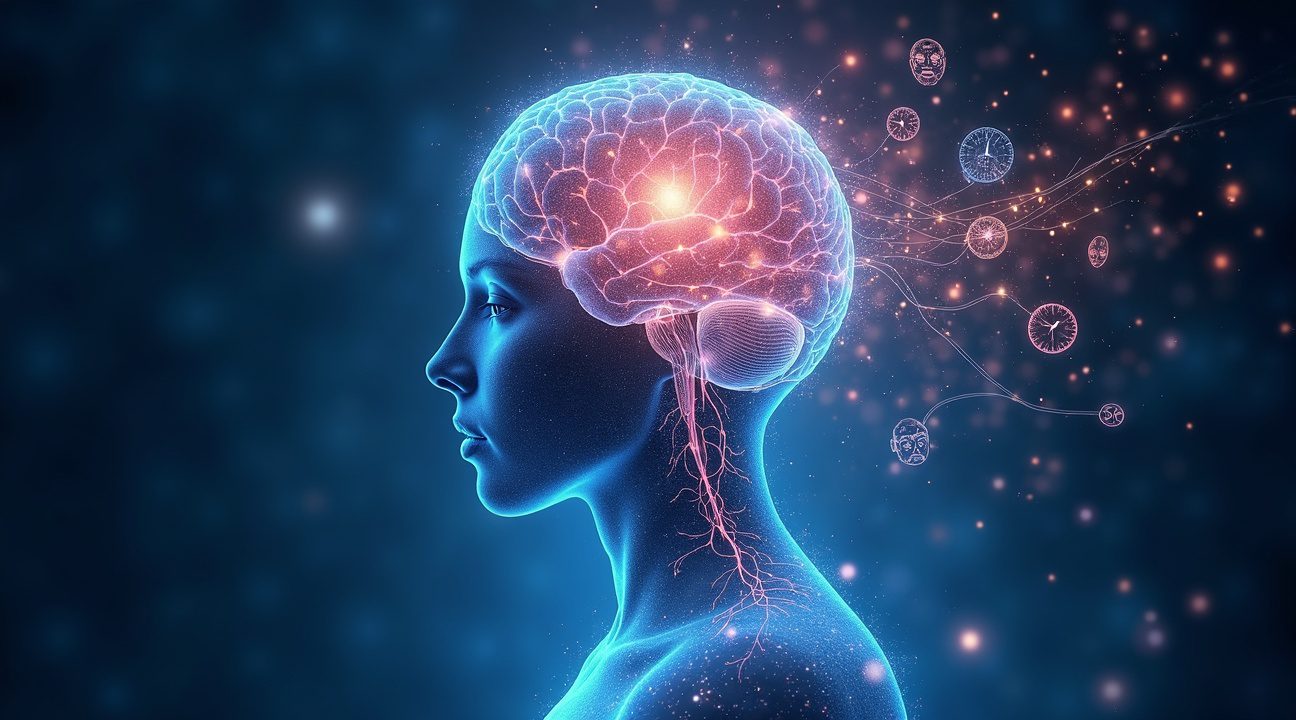
Why This Research Changes Everything We Know About Adult Brain Plasticity
The brain’s remarkable ability to restructure itself during pregnancy has fundamentally altered our understanding of adult neuroplasticity. For decades, scientists believed that significant brain changes primarily occurred during childhood and adolescence, with adult brains maintaining relatively static structures. These groundbreaking findings shatter that conventional wisdom, revealing that pregnancy triggers some of the most dramatic neural reorganization ever documented in healthy adult brains.
Redefining Brain Adaptation Capabilities
I find it fascinating how pregnancy-related brain changes demonstrate that adult neural networks possess far greater flexibility than previously imagined. The research shows that expectant mothers experience extensive gray matter reductions in regions associated with social cognition, while simultaneously developing enhanced neural efficiency in areas critical for mother-infant bonding. This isn’t simply minor tweaking—it’s comprehensive brain remodeling that rivals the neural plasticity observed during critical developmental periods.
What makes these discoveries particularly striking is their duration. The fact that these structural changes persist for years after childbirth suggests that adult brains can maintain long-term adaptations far beyond what researchers thought possible. This challenges the traditional view that significant neuroplasticity diminishes with age, opening exciting possibilities for understanding how our brains respond to other major life transitions.
Revolutionary Therapeutic Implications
The therapeutic implications of these findings extend well beyond maternal health. Understanding the mechanisms behind pregnancy-induced neuroplasticity could revolutionize treatments for various neurological conditions. I believe these insights will prove invaluable for developing interventions for depression, anxiety, and even neurodegenerative diseases.
Researchers can now explore how similar neural adaptation processes might be triggered or enhanced in other contexts. The brain’s demonstrated ability to undergo such extensive reorganization during pregnancy suggests several promising therapeutic directions:
- Hormone-based therapies that could stimulate beneficial neural changes in non-pregnant individuals
- Targeted interventions for postpartum depression that work with natural brain adaptation processes
- New approaches for treating age-related cognitive decline by harnessing adult plasticity mechanisms
- Enhanced rehabilitation strategies for stroke recovery that leverage pregnancy-like neural flexibility
These discoveries also provide fresh perspectives on brain potential throughout adult life. Rather than viewing the adult brain as increasingly rigid, we can now appreciate its capacity for profound transformation when faced with significant biological and psychological demands. This research represents a paradigm shift that will influence neuroscience research for decades to come.
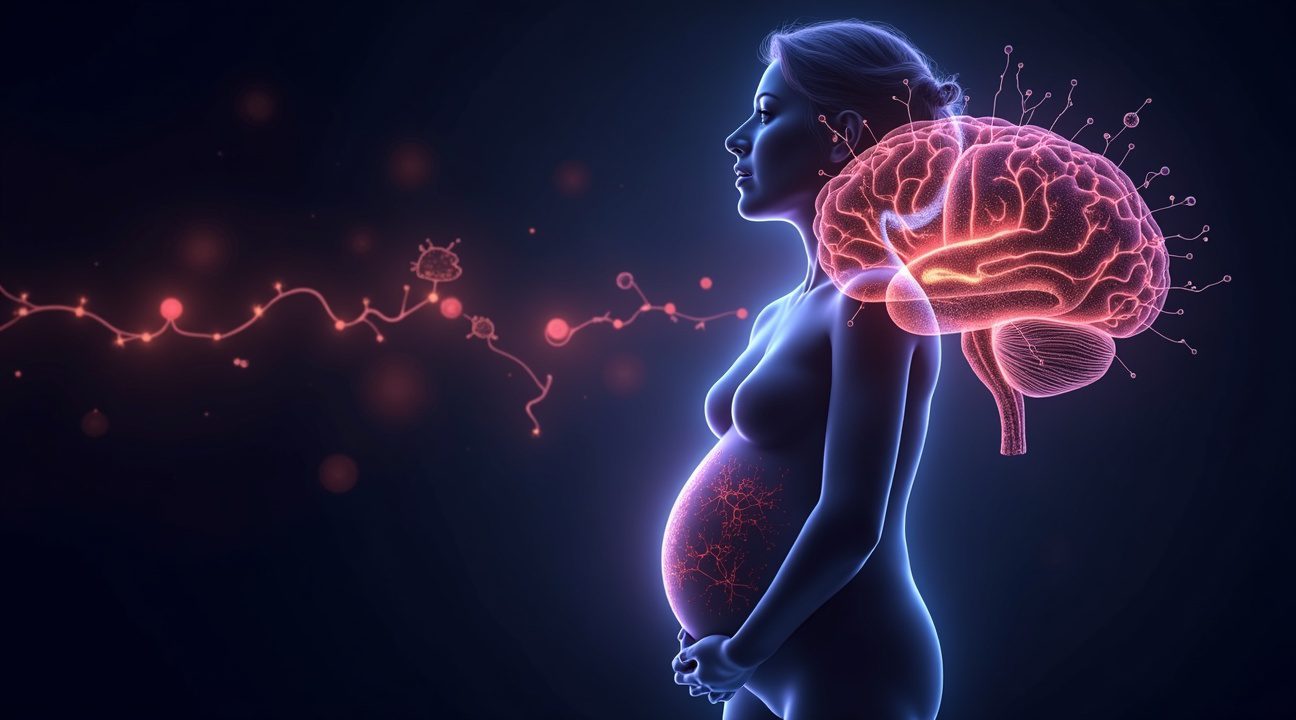
Sources:
Brain & Behavior Research Foundation – Study Provides Unprecedented View of Profound Brain Changes Over the Course of Pregnancy
Nature Neuroscience – Neuroanatomical changes observed over the course of a human pregnancy
European Research Council Science Stories – How pregnancy reshapes a mum’s brain
PubMed – Longitudinal investigation of neurobiological changes across pregnancy
ParentData by Emily Oster – How Pregnancy Changes Your Brain
University of California News – New study reveals changes in the brain throughout pregnancy

